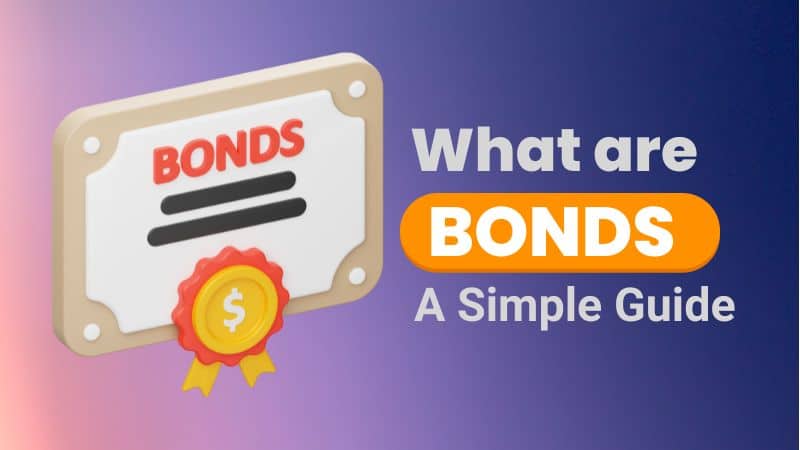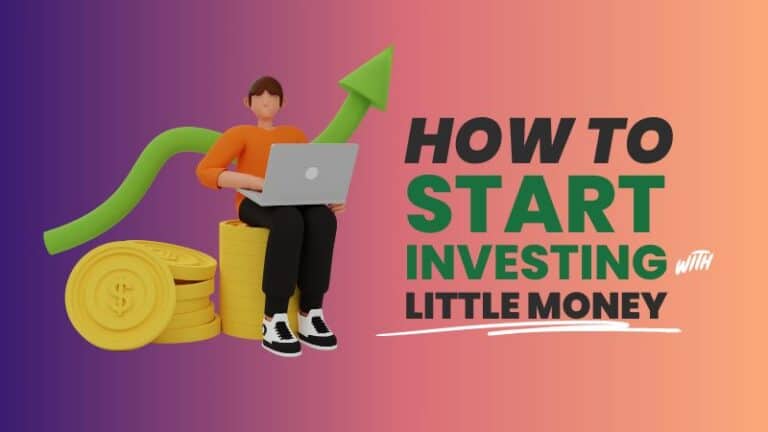What are Bonds: A Detailed Guide for Investors
Investing in bonds can be a great way to diversify your portfolio and increase your financial stability. But what are…

Investing in bonds can be a great way to diversify your portfolio and increase your financial stability. But what are bonds? Read along as I show you how to invest in bonds as your next type of investment.
Bonds offer investors a fixed income, meaning they can receive regular payments over the duration of their investment. Many investors find that bonds are less risky than stocks, and therefore prefer them as part of their investment portfolio.
Investing in Bonds
There are several options available to investors. These are the most common bonds available.
Individual Bonds
This type of bond allows investors to select specific bonds based on their risk tolerance and investment goals.
When you buy an individual bond, you get to choose the exact bond you want. It’s like picking out a special toy for you— you can pick exactly what you want that makes you happy.

You can pick individual bonds with different kinds of interest rates and lengths of time, too. That’s kind of like picking a different color balloon or outfit for your friend—you get to be creative and pick something that suits their personality!
It’s fun to go shopping for individual bonds because you get to decide which one is right for your investments. You can even mix and match bonds with different features to create the perfect investment.
Bond Funds or ETFs
This type of bond pool money from multiple investors and use it to buy a diversified portfolio of bonds. Bond funds can be actively managed or passively managed, and they offer the potential for higher returns but also come with higher risks.
ETFs are like super cool shopping trips! Imagine you have a bunch of friends and you all want to buy something special but don’t have enough money. So what do you do? You pool your money together so that you all have enough!

ETFs are just like that, except instead of buying something special, they buy a big collection of bonds. It’s like going on a shopping spree and buying lots of different items at once! All the money from multiple investors is put together which allows them to buy a lot more than they would be able to on their own.
Isn’t it amazing how much power our combined money can have?
What are Bonds?
Bonds are essentially IOUs or debt securities that represent a loan made by the investor to the issuer.
When you invest in bonds, you lend money to a government, municipality, corporation, or other entity for a fixed period of time at an agreed-upon interest rate.
In return, the bond issuer pays you periodic interest payments over the life of the bond and returns your initial investment once it matures.
Bonds are a really cool way for you to make money! Think of it this way: When you loan someone your money, you expect them to give it back to you at a later time. That’s kind of like what bonds do.

When an investor buys a bond from a company, the company is borrowing money from the investor. The investor agrees to loan the money with an IOU (or a document saying they owe the money).
Different Types of Bonds
Investing in different types of bonds requires careful consideration before making any decisions since each bond type has its unique characteristics that affect returns on investments depending on individual investor preferences such as level of risk tolerance and expected return rate among others.
Treasury Bonds

Treasury bonds are issued by governments to fund their budget deficit. US government bonds are typically considered the safest investment. They are long-term bonds and have a maturity period ranging from 10 to 30 years and offer low-interest rates compared to other bond types.
Municipal Bonds

Municipal bonds are issued by state or local governments to finance public projects such as schools and highways. These types of bonds offer tax-free income at both federal and state levels.
Corporate Bonds

Corporate bonds are issued by companies in need of capital for expansion or financing purposes. They carry a higher degree of risk than government-issued securities but provide higher returns to investors as well. Corporate debts can also be categorized into high-yield (junk) or investment-grade based on their respective credit ratings.
Benefits of Bond Investing
Bonds are a type of debt security that is issued by corporations, municipalities, or governments. Different types of bonds exist, and they vary based on who issues them, the length of time until maturity, and the level of risk involved.
Portfolio Diversification
Investing in bonds can provide a stable source of income and diversify your investment portfolio. This predictable income stream makes them an attractive option for risk-averse investors.
Low-risk Investment
Another significant benefit of bond investing is its low-risk nature compared to other securities like stocks. Bonds have lower volatility and greater stability, making them an excellent hedging tool against market downturns.
Flexibility
Bond investing provides flexibility as it offers short-term and long-term options ranging from one-year treasury bills to thirty-year government bonds.
Investors can also purchase bonds or opt for bond funds that provide professional management and diversification across multiple issuers and maturities. This diversification minimizes the risk of default by any single issuer, ultimately protecting your investments’ value.
Risks of Bond Investing
While bond investing is generally considered to be a safer investment option compared to stocks, it still comes with its own set of risks.
1. Interest Rates
One of the biggest risks associated with bond investing is interest rate risk. When interest rates rise, the value of existing bonds decreases. This can lead to losses for investors who have invested in bonds at lower interest rates.
2. Credit Risks
Another risk of bond investing is credit risk. This occurs when the issuer of the bond defaults on their payments or goes bankrupt. Normally, bond issuers with lower credit rating offer higher interest rates.
3. Liquidity
Lastly, liquidity risk is another potential risk when investing in bonds. Unlike stocks which can be easily bought and sold on exchanges, some bonds may not be as liquid and could take longer to sell if needed.
Strategies for Smart Bond Investing
Investing in bonds can be a smart move for those seeking low-risk investments with predictable returns. However, without proper strategy and research, bond investing can end up being just as risky as any other investment.
Diversification
One key strategy is diversification- spreading out your bond investments across different issuers, maturities, and credit ratings to minimize risk.
Interest Rates
Another important factor to consider is interest rates. When inflation or the economy improves, interest rates tend to rise which causes the price of the bond to fall. To mitigate this risk, investors should consider investing in short-term bonds or floating-rate funds that adjust their interest payments based on current market rates.
Creditworthiness
Lastly, it’s essential to understand the creditworthiness of the issuer before investing in a bond. The higher the issuer’s credit rating, the lower their perceived default risk which translates into lower yields.
It’s also important to keep an eye on any changes in the issuer’s financial health that could affect their ability to make timely payments on their bonds.
Frequently Asked Questions
How do I buy bonds?
Bonds can be bought through a broker or directly from the issuer.
Are bonds a good investment?
Bonds are generally considered a low-risk investment, but the returns may not be as high as other investments like stocks.
How does the bond market work?
The bond market is where investors buy and sell bonds in the primary and secondary markets.
What is the interest rate on a bond?
The interest rate on a bond, also known as the coupon rate, is the rate at which the issuer of the bond will pay interest to the bondholder.
How are bond prices determined?
Bond prices are determined by supply and demand, the interest rate, and the creditworthiness of the issuer.
What is a mutual fund that invests in bonds?
A bond mutual fund is a portfolio of bonds managed by a professional fund manager.
What is a bond rating?
A bond rating is a grade assigned to a bond, indicating the creditworthiness of the issuer.
How often do investors receive earnings from bond investments?
Bond investors may receive interest payments semiannually, quarterly, or monthly. When you buy a bond, the issuer will tell you when it plans to make its next interest payment.
What determines the market value of a bond?
The price of a bond in the open market is determined by various factors, including the current interest rates, credit ratings, and maturity time.
Final Thoughts
Investing in bonds requires careful consideration and analysis. It’s essential to understand the various types of bonds available, their associated risks and returns, and how they fit into your investment portfolio. Diversification is key when investing in bonds, as it helps to minimize risk and maximize returns.





